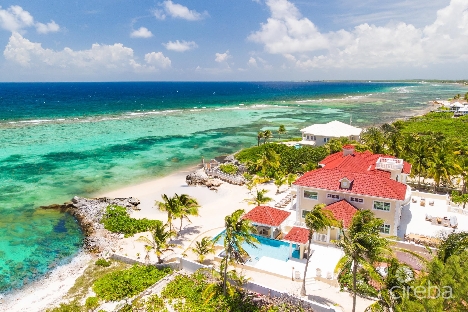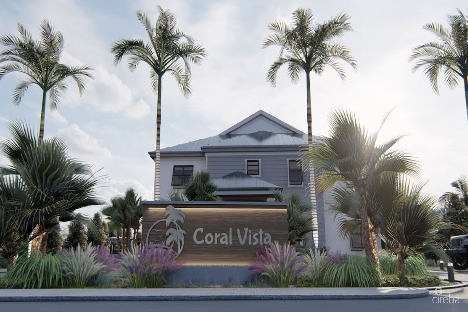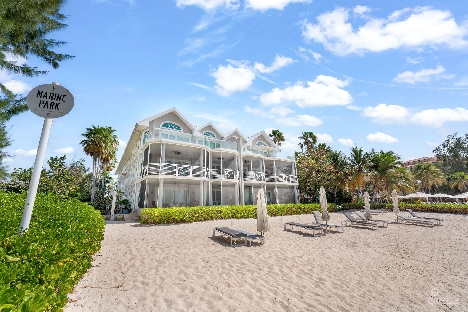Hurricanes, while not an everyday occurrence in the Cayman Islands, happen about four times a year on average. Most of these storms not only enter the islands’ sphere of influence but also make landfall, with only a few turning away beforehand. The hurricane season typically lasts from early June to late November, making it essential for residents to be prepared.
In the past 12 months, the most severe hurricane to hit the islands was Hurricane Beryl. On July 3, 2024, at 10:00 pm local time near East End, it reached wind speeds of up to 209 km/h and had a diameter of 92 kilometers, making it a category 4 hurricane according to the Saffir-Simpson scale.
Given the potential for severe weather, it’s crucial to take steps to protect your home and family. The following guidelines, recommended by the Hazard Management Cayman Islands (HMCI) agency, provide the essential steps to make your island home more resilient.
Know your risks
Understanding the specific risks your home faces is the first step in preparing for a hurricane. The location, design specifications, and materials used in your home all contribute to its ability to withstand natural hazards. In the Cayman Islands, your home may be vulnerable to a variety of weather-related conditions such as storm surges, flooding, high winds, and even earthquakes.
Discuss these hazards with your family and assess your home’s vulnerability to each. Knowing these risks will help you take the necessary steps to reinforce your home.
Understand structural and non-structural elements
The components of your home are divided into two categories:
- Structural Elements: These are critical for overall safety and include the roof, beams, columns, slabs, load-bearing walls, braces, and foundations.
- Non-Structural Elements: These enable your home to operate and include the water heater, air conditioning unit, appliances, shelving, and cabinets. Safeguard your home by having a functioning smoke detector and regularly checking the batteries. Keep a fire extinguisher on hand. Remember to service fire extinguishers regularly to ensure they are in proper working order.
Identify the safest area in your house
In the event of a hurricane, locate the safest area in your home, typically the innermost room with no windows or outside walls. This safe room can protect your family from flying debris and structural collapse.
Check your roof structure
Have an experienced builder or engineer inspect your roof and perform any necessary repairs. A strong roof is essential in a hurricane and should be reinforced with hurricane straps, which anchor the roof’s wood frame to the walls. If your roof has gable ends, ensure they are properly braced with 2×4 or 2×6 planks attached at right angles to the truss system using screws, not nails, for better resistance.
Secure double entry doors
Double entry doors can be weak points in your home. Secure the inactive door to the header and thresholds by adding reinforcing pins to the top and bottom. Additionally, install heavier hinges and more secure locks, and ensure exit doors open outwards for better storm resistance.
Develop a family house plan
Creating a “family house plan” is essential for ensuring that everyone knows what to do in an emergency. Important components of this plan include:
Emergency Contacts – Post emergency telephone numbers on your phones and ensure your children know how and when to call 9-1-1.
Escape Routes – Determine escape routes from your home and decide on a meeting place if separated during a disaster.
Practice Drills – Practice evacuating your home, including night drills, to ensure everyone is prepared.
Trim large trees
Check and evaluate the trees around your home. If any large trees could potentially blow over and hit your house, have them trimmed or removed to prevent damage.
Install storm shutters
Install storm shutters or purchase pre-cut 5/8 inch outdoor plywood boards for each window. Install anchors in the plywood and pre-drill holes so you can quickly put the boards up when a storm approaches. Taping windows is not recommended as it does not prevent breakage.
Utility shut offs
Ensure all family members know the location of the electrical circuit box and the shut-off valve for the water entering the house. Label these utility shut-offs and demonstrate how to turn them off.
Review and update insurance
Check your insurance coverage and update if necessary. Note that flood damage is not always covered by standard homeowners insurance, so consider additional coverage if needed.
Get expert advice on buying hurricane-resilient homes
If you’re in the market for a holiday home or investment property in Cayman, it would be wise to consider discussing your safety concerns with a local real estate professional who not only has extensive experience in dealing with severe weather conditions but also expert knowledge in building and maintaining homes in the islands.
With over 40 years of experience in both the real estate and construction industries, ERA Cayman broker and co-owner Robert Totten has played a key role in many of Cayman’s major commercial and tourism projects, especially in the Seven Mile Beach corridor.
When looking for a home in the Cayman Islands, Robert suggests that the buyer consider some key features to ensure it is well-protected against hurricanes: “Make sure the home is not located in a low-lying area that could flood. It is best if the home has hurricane-rated windows or at least hurricane shutters on all windows and doors. A standing seam metal roof is preferred, which is the best protection against high winds during a storm. A home with a garage is also very beneficial for the protection of vehicles during storms.”
Prospective buyers should also assess the hurricane resilience of a property by considering the date the structure was built. “Each year the local planning regulations are reviewed and upgraded regarding hurricane protection. Homes older than ten years may not have the current rules built into the home,” Robert advises. “Buyers should request specific inspections or certifications to ensure the home’s compliance with the latest hurricane protection measures.
When choosing a location, Robert notes that “most second-home buyers prefer to have their second home on the ocean. If their property is on the water, then insurance should be purchased. The homes on the open ocean are the most vulnerable to rising seas. Homes on canals are also at risk due to rising seas, and these homes should contain as many hurricane protection features as possible. The safest location on the island would be as far inland away from the water’s edge as possible but also contain hurricane protection features as well.”
Be proactive
Taking proactive steps to reinforce your home and prepare your family for a hurricane can significantly reduce the risks and potential damage. By following these guidelines and expert advice, you can ensure that your home is better equipped to withstand a hurricane, keeping your loved ones safe and secure during the storm.
For professional advice in finding a beautiful home in the Cayman Islands that is also safe and resilient, our trusted team of ERA Cayman real estate agents will be more than happy to assist you. Call us today!
Inquire for More Information

ERA Blogs are written in-house. It is a team effort and we all contribute our ideas and suggestions. ERA is a diverse Team of Real Estate Agents who each have specialties. We have Seven Mile Beach Real Estate Experts, Beachfront Real Estate Experts, Commercial Real Estate Experts and everything you could possibly need when looking for a Real Estate Team. The blog is summarized and submitted by ERA’s Web Team.



